Teaching, Learning, and Assessments
Technology Coaches assist teachers in using technology effectively for assessing student learning, differentiating instruction, and providing rigorous, relevant, and engaging learning experiences for all students.
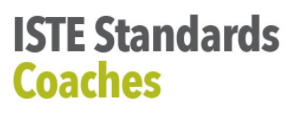 a. Content Standards & Student Technology Standards: Coach teachers in and model design and implementation of technology-enhanced learning experiences addressing content standards and student technology standards
a. Content Standards & Student Technology Standards: Coach teachers in and model design and implementation of technology-enhanced learning experiences addressing content standards and student technology standards
b. Research-Based Learner-Centered Strategies: Coach teachers in and model design and implementation of technology-enhanced learning experiences using a variety of research-based, learner-centered instructional strategies and assessment tools to address the diverse needs and interests of all students
c. Meaningful and Relevant Learning: Coach teachers in and model engagement of students in local and global interdisciplinary units in which technology helps students assume professional roles, research real-world problems, collaborate with others, and produce products that are meaningful and useful to a wide audience
d. Creativity, Higher-Order Thinking, and Mental Habits of Mind: Coach teachers in and model design and implementation of technology-enhanced learning experiences emphasizing creativity, higher-order thinking skills and processes, and mental habits of mind (e.g., critical thinking, metacognition, and self-regulation)
e. Differentiation: Coach teachers in and model design and implementation of technology-enhanced learning experiences using differentiation, including adjusting content, process, product, and learning environment based upon student readiness levels, learning styles, interests, and personal goals
f. Instructional Design Principles: Coach teachers in and model incorporation of research-based best practices in instructional design when planning technology-enhanced learning experiences
g. Assessment: Coach teachers in and model effective use of technology tools and resources to continuously assess student learning and technology literacy by applying a rich variety of formative and summative assessments aligned with content and student technology standards
h. Data Analysis: Coach teachers in and model effective use of technology tools and resources to systematically collect and analyze student achievement data, interpret results, and communicate findings to improve instructional practice and maximize student learning
Teaching, Learning, and Assessments Summary:
a. Content Standards & Student Technology Standards: Increasing teacher and student digital and media literacy starts by embedding technology to improve student learning through professional development activities. Technology can benefit the classroom and can be used to provide authentic learning activities. The integration of technology standards with content standards can bring a new level of understanding, increases student learning as they also experience real life problems and applications.
There is a need for professional development on content standards and implementation strategies that work best. To begin there should be a culture focused on inclusive, collaborative, needs-based training that is ongoing, job-embedded and available just in time learning. Other elements of successful teacher professional development should create learning communities where teachers can share and discuss learning activities that they use with their students.
Teacher leaders have a greater impact since they understand the culture, as well as the needs and the majority of teachers, value the knowledge, innovation, and leadership of their peers. They show educators how to effectively use technology in their classroom, by integrating authentic learning activities. (See Posts: Technology Embedded professional development)
b. Research-Based Learner-Centered Strategies: My research led me to explore the TPACK model as described in “Technological Pedagogical Content Knowledge: A Framework for Teacher Knowledge.” This model and framework are research based, learner-centered strategies that explain how the integration of technology with content knowledge and pedagogy can be structured for our classrooms, allowing for the increased student growth.
In computer science, specifically with pair programming, there is new knowledge developed that at the intersection where all three work together, it will transform the learning environment. Coaching computer science teachers in this model, by design and implementation of pair programming, can, if the pairing is correctly set up, address the diverse needs and interests of all students while promoting student understanding and demonstrated growth. (See Posts: Constructing Learning through Communication and Collaboration using Pair Programming)
c. Meaningful and Relevant Learning: Learning and Teaching are sciences through which different strategies and philosophies develop. Teachers are diverse in their strengths and weaknesses and need different types of professional development at specific points of their careers, particularly as it relates to individual content knowledge. With changes in content, standards, and philosophies, the question is how and by what method to provide for growth, and promptly. This supports creating learning that follows a “Just in Time” model (Sambataro), training when needed, not on a shotgun model, hoping that it will be beneficial in the future. Two technology models are Modular Object-Oriented Dynamic Learning Environments (Moodle) and Personal Learning Networks (PLN).
A Moodle is like a traditional Learning Management System whereas it can contain multiple MOOCs. Communication resources are included such as messaging, forums, and blogs. As closed learning environment, they depend on self-directed learning in which learning outcomes rely on the activities of the learners themselves.
To be successful PLN’s should come from a collaborative community spirit, created with varied online opportunities to share information, ask questions, create connections and support emerging technologies. Using options like Twitter, teachers can have connections to professionals who are doing amazing things. Having them available for feedback is phenomenal. (See post: Moodle’s & PLN’s)
d. Creativity, Higher-Order Thinking, and Mental Habits of Mind: The most successful teachers are connected, have an active professional learning network, engage students with the technology, in addition to using technology in or out of the classroom. When teachers have successes integrating technology in or outside of the classroom, they see the benefits which encourage them to take risks and explore other digital strategies, especially those that are promoted by their professional development communities.
High Schools and Districts are creating their Facebook pages and a Twitter accounts. The technology advantage of using social network sites is the speed in which you can share information with students and families. Teachers can easily share multimedia and provide a collaborative learning environment that is familiar to the student, and they enjoy. Knowing that students learn more by being actively engaged and motivated by the connection to peers allows for a broader discussion of topics and events. Plus, they enjoy using the technology. While this is a good communication tool, it is not the forum for newsletters or forms and official information. The benefits to parents are as common as finding out what students are doing at school or in class, but also allowing them to choose how they connect with the school. Through multiple choices, they are apt to find a way that interests and works best for them. (See Post: Modeling Digital Age Learning)
e. Differentiation: Increasing teacher and student digital and media literacy start by embedding technology to improve student learning through professional development activities. Technology can benefit the classroom and can be used to provide authentic learning activities.
Professional development works best when building a culture focused on inclusive, collaborative, needs-based training that is ongoing, job-embedded and available just in time learning. Other elements of successful teacher professional development should create learning communities where teachers can share and discuss learning activities that they use with their students.
Teacher leaders have an impact since they understand the culture, as well as the needs and the majority of teachers, value the knowledge, innovation, and leadership of their peers. They show educators how to effectively use technology in their classroom, The same way as in professional learning, by integrating authentic learning activities. (See Posts: Adult Professional Development)
f. Instructional Design Principles: By understanding appropriate pedagogical practices for using technology, teachers can effectively incorporate technology. Significant and long‐lasting changes occur when a school’s “policies, practices, culture, and funding” are structured to facilitate the integration of educational technology. The distributed leadership model supports shifts in teaching strategies as a way to continue supporting teacher leaders and implement shifts in teaching strategies. Allowing teacher voice in choices that are school based and implemented through professional learning impacts the classroom through teachers transforming their practice.
Instruction is more important than technical mastery of technology, although both elements are essential. Successful PD programs provide ongoing support through coaching; programs that include coaching or mentoring are more likely to implement new instructional methods. Other effect supports are professional learning communities and information repositories. Online and Open Educational Resources can provide continuous and convenient access to resources. Motivators for teachers including Badges, or micro-credentials, provided through PD that is personalized, flexible, and embedded in classroom practice are becoming more prevalent. (See Posts: PD for Technology Integration Best Practices) http://msthissen.org/iste2/pd-for-technology-integration-best-practices/
g. Assessment: Many school districts, Measures of Academic Progress® (MAP®) exams which are “computer adaptive interim assessments that provide a personalized assessment experience by adapting to each student’s learning level.” As the student answers questions, the test decides which question to ask next by evaluating the student’s response. The test will ask harder questions the more you get right, or easier questions, based on wrong answers. MAP is said to more accurately evaluate a student’s Math knowledge and can provide a better picture of what the student has learned.
Remediation is then developed from the standardized scale of scores that represent the probability that a student would pass the high stakes Math exam. Also, the scale shows what would represent one year of growth. An example would be if a student needed 20 more points on the MAP exam to be statistically ready to pass. The company says that the average student growth rate is approximately 15 points per year, this would predict that the student would be more likely to pass the test after two years of instruction. This information is then used by the district to address professional development for learning and teaching. MAP exams provide students with varied formative assessments aligned with content. The results have been used the past few years to individualize instruction and help the student pass. The Math EOC pass rate has increased some, but I am unsure if the instruction changed because of the outcomes. (See Posts: Formative Assessment Measures of Academic Progress)
h. Data Analysis: The evaluation is a significant step in reviewing the effectiveness of a program that is working to increase student learning about a content area. The evaluation covers all aspects of the program and uses data to measure it is a success. The five phases of program evaluation rely on defining the need. Reviewing best practices and focus needed to determine the method for the evaluation and a planned approach for data collection. Before collecting data, planning to determine how it is gathered and stored to produce the intended results finalized. Analyzing data can require cleanup of the data to ensure that the analysis can be complete. The use of the program report defined in the beginning will result in whether the report will be a full report or an executive summary. (See report here: Practicum)
Fulfilling Teaching, Learning, and Assessments Standards:
Through my position as the Computer Science Program Specialist for OSPI, I work to ensure that digital equity in implementation as an essential element of the Computer Science standards. The Teaching, Learning, and Assesment Standards through the priority of equity integrated into the essential questions fulfill this standard.
Content Standards & Student Technology Standards:
I am currently preparing the Request for Proposal (RFP) for the next round of Computer Science grants. The funding could be anywhere from the $2 million we had in the previous biennium, to a suggested amount of $6 million, but there is also the slim chance that the grant is unfunded. This competitive grant while similar to the previous will be reflective of the data from the progress report that I completed. The needs and recommendations for implementing the Computer Science Standards in the next grant based on collected data and results. The data shows where there the increased investment resulted in increased student learning, but also what teacher professional learning made the most impact. The one clearly defined outcome is the professional learning needed about the Computer Science Standards. They are new enough that there is often confusion between them and the Educational Technology Standards.
Research-Based Learner-Centered Strategies:
In computer science, the learner-centered strategies are similar to those of educational technology. There is new knowledge created and developed through application of the standards. As I work toward the integration of the computer science standards into the other areas of the curriculum, teachers will define it is a success. Computer Science can create a new understanding of concepts and help in learning, thereby transforming the learning environment. Coaching computer science teachers in this model, by design and implementation of integration strategies, can, if the curriculum is correctly set up, address the diverse needs and interests of all students while promoting student growth.
Meaningful and Relevant Learning:
One way in which to connect Computer Science teachers is through Personal Learning Networks (PLNs). A successful PLN should come from a collaborative community spirit, created with varied online opportunities to share information, ask questions, create connections and support emerging technologies. As I look at the ways to help these teachers connect, I will need to target specifically their needs. With this knowledge, I can target Professional development resources for computer science concepts and practices. Survey data will help us develop activities to facilitate learning, and create connections that improve skills in real time. Professional Development Channel:
As Personal Learning Networks for our teachers becomes an integral part of professional development, one of the additional ways that I can offer training would be through Professional Development Channels (PDC). PDC’s allow for teachers learn technology tools (or other) through recorded training and videos which model classroom practice.
Creativity, Higher-Order Thinking, and Mental Habits of Mind:
The most successful teachers are connected, have an active professional learning network, engage students with the technology, in addition to using technology in or out of the classroom. When teachers have successes integrating technology in or outside of the classroom, they see the benefits which encourage them to take risks and explore other digital strategies, especially those that are promoted by their professional development communities.
There have been struggles in creating professional learning networks for computer science teachers. The fact that some schools and districts only have 1 to 2 teachers teaching the subject presents issues of isolation. As we look at our implementation of the computer science standards, there is a big piece around community building and sharing of knowledge and resources. Work with the Computer Science Teachers Association will help us build community, the opportunity of working with two functioning chapters will help in developing communities even for those in remote parts of the state.
Differentiation:
Digital equity is a priority for Computer Science and a priority focus for me. As a computer science graduate in the early 90’s, I know first hand the issues that women and minorities face, for me this is personal. Lack of access for underrepresented groups does not only deny them opportunities to begin pathways toward high-paying, high-demand careers. It also limits students from learning the literacy skills of the 21st century. Studying computer science not only enables careers in computing but provides skills such as logic and critical thinking. I lead the Computer Science implementation team and develop strategies through equity as a lens.
Instructional Design Principles:
My implementation planning based on understanding appropriate pedagogical practices for using technology; allows for teachers effectively incorporating computer science.I led the work that culminated in the adoption of the Washington State Computer Science K-12 Learning Standards in December 2016. I have organized several focus groups that are looking at a four or five-year process that will generate transition and crosswalk documents for computer science integration at the elementary and middle school levels, and high school integration into Math and Science. In developing professional development for computer science programs, one of our goals is how do we provide ongoing support through coaching. Through districts that are finding success in their process, we can find professional development that will better support teachers in implementing new instructional methods.
http://www.k12.wa.us/ComputerScience/ImplentationPlanning.aspx
Assessment:
As I work on implementing the Computer Science Standards, there have been several questions about assessment. The legislation HB 1813 creates the Computer Science Standards but does not say anything about assessments. While I am interested in developing assessments, we have time to evaluate implementation processes first. The assessments when created will align to the standards, as well as meet several of OSPI’s goals of student growth and career and college ready.
The additional work on assessments will relate to the Computer Science Grants if we have them in the next biennium. There were no metrics requested in the previous grants, so we will be looking at creating a way to measure the success of the intended goals. The grant was intended to train and credential teachers in computer science; provide and upgrade technology needed to learn computer science; and, and introduce and engage students in computer science, especially to find innovative ways to reach students populations from historically underrepresented groups, including girls, low-income students, and minority students,
Data Analysis:
My role is to provide information in regards to the grants distribution and report the outcomes. I requested progress reports about activities through a structured self-report questionnaire collecting information on activities, matching grant agencies, standards focus, and data on student and teacher impacts. The questionnaire also explored events or situations related to individual grant proposal topics and experiences. I created a program evaluation from this data. The report was worked on throughout my practicum, and the results are on the Practicum page.
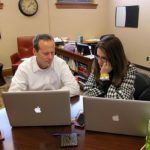
PD for Technology Integration: Best Practices
Significant and long‐lasting changes occur when a school’s “policies, practices, culture, and funding” are structured to facilitate the integration of educational technology. The distributed leadership model is a way to continue supporting teacher leaders and implement shifts in teaching strategies.
read more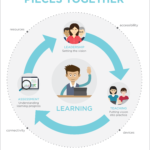
Adult Professional Development
In the Educational Leadership journal of February 2009, Jason Margolis writes about strategies that teacher leaders can embed to engage their colleagues and realize the benefits of instructional changes. While there were a number of presentations reviewed, the strategies below produced “observable teacher engagement”. The one constant in these researches is that teachers value the knowledge, innovation and leadership of their peers.
read more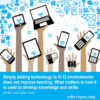
Technology embedded Professional Development
Technology can bring benefits to the classroom, and can be used to provide authentic learning activities. One way to help educators is to show them how to effectively use technology in their classroom, in the same way as we would our students, in authentic learning activities that are integrated as part of professional development. Increasing the effectiveness of professional development with authentic learning, integrating technology has the potential of increasing teacher performance.
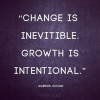
Moodles & PLNs
Modular Object-Oriented Dynamic Learning Environments (Moodles) as Personal Learning Networks (PLNs)
What I understand of Moodle’s and their technology infrastructure is minimal, I have interacted mainly as a user through my participation in the Microsoft IT Academy, now known as the Microsoft Imagine Academy. The support provided to the teachers has been through the EdTech Moodle, which consists of curriculum and forums.
read more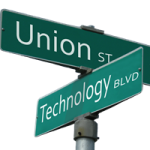
Modeling digital age learning
When reading the NMC Horizon Report form 2014, it is amazing to understand how much of what they talked about is becoming reality. What I found the most striking was when they were writing about Digital Strategies and Enabling Technologies, in which something new, easier to use, meaningful and more capable is used to transform what we expect.
read more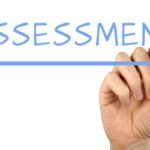
Formative Assessment: Measures of Academic Progress (MAP)
When I read that we were to discuss an assessment tool that our district or school uses I immediately thought of MAP testing in math. Many school districts, including Sumner use Measures of Academic Progress® (MAP®)exams which are “computer adaptive interim assessments that provide a personalized assessment experience by adapting to each student’s learning level.”
read more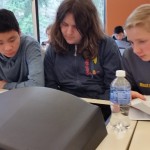
Constructing Learning through Communication and Collaboration using Pair Programming
Pair programming supports student-centered learning, where they practice incorporating skills in support of important data structures as they are challenged to create a program that solves a problem. Collaboration is required and students generate their own questions and discussion between students on the concepts increase as they become familiar with the process.
read more